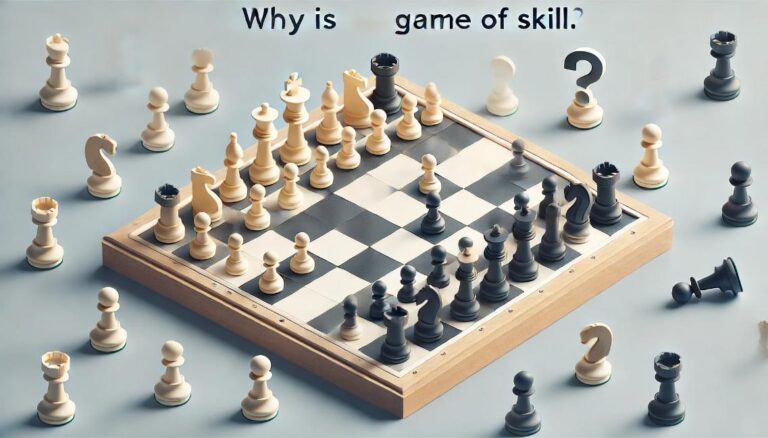The Basics of Reti Opening
The Reti Opening is a popular chess opening for white that begins with the move 1. Nf3, named after the Czechoslovakian Grandmaster Richard Reti. This opening is characterized by its flexible and strategic nature, as it allows white to control the center while delaying the development of their bishop and revealing their strategic intentions to their opponent.
After 1. Nf3, black has several possible responses. The most common are 1…d5, 1…Nf6, and 1…c5. Each of these moves presents a different challenge for white to overcome, which is why the Reti Opening is a popular choice among top-level players looking for a versatile and well-rounded approach.
One of the main advantages of the Reti Opening is that it avoids the symmetrical pawn structures that often arise with other opening moves, allowing white to play for a more dynamic and imbalanced game. This makes it a great choice for players who prefer to play for a win rather than aiming for a draw.
Additionally, the Reti Opening is less studied compared to other more popular openings, giving white the opportunity to surprise their opponent and take them out of their comfort zone. This can be especially effective against players who rely on well-known openings and may struggle when faced with an unfamiliar position.
Strategic Ideas behind Reti Opening
The Reti Opening is often described as a hybrid of the English and the Réti. It shares some of the same concepts and ideas as these two openings, but with a different move order. Let´s take a look at some of the strategic ideas behind this opening:
Control of the Center
The Reti Opening begins with a knight move, which does not directly contest control of the center, unlike other popular openings like 1. e4 or 1. d4. However, the knight´s placement on f3 still indirectly controls the d4 and e5 squares and allows white to influence the center with other pieces, such as the c-pawn or the light-squared bishop.
Delaying the Development of the Bishop
In most openings, white´s developed their bishop to either c4 or g5 by move 3. However, in the Reti Opening, white keeps their bishop on f1 and waits until later in the game to develop it. This allows white to first make further preparations and assess the position before committing to a specific square for the bishop.
Creating a Flexible Pawn Structure
The Reti Opening often leads to a flexible pawn structure, where white´s pawns can be easily adapted to fit the needs of the position. This is because, unlike other openings, white´s pawns are not immediately committed to specific squares, giving them more options to vary their pawn structure depending on the game´s demands.
Preparing for a Strategic Attack
One of the most significant advantages of the Reti Opening is its ability to prepare for a strategic attack while maintaining a solid position. With control of the center and a flexible pawn structure, white is well-positioned to launch an attack on the enemy king, either through a pawn storm, a bishop sacrifice, or by opening up lines for their pieces.
Sample Game: Reti Opening in Action
To better understand the strategic ideas behind the Reti Opening, let´s take a look at an example game where this opening was used.
White: Magnus Carlsen
Black: Fabiano Caruana
Tournament: Tata Steel Masters (2017)
Result: 1-0
1. Nf3 d5 2. g3 c6 3. Bg2 Nf6 4. O-O Bg4 5. h3 Bh5 6. c4
In this game, Carlsen follows the most commonly played moves in the Reti Opening, bringing out his king´s knight, fianchettoing his bishop, and pushing the c-pawn. Black is also following the standard moves in this line, with a solid pawn structure and well-developed pieces. White now plays 6…e6, further securing control of the central d5 square.
6…e6 7. cxd5 cxd5 8. Qb3 Qb6 9. Qxb6 axb6 10. Nc3 Nc6 11. d3 Be7
White has now developed his pieces and has excellent control over the center, while black has a symmetrical pawn structure. However, white now launches an attack on the queenside with the move 12. Nb5, threatening to win a pawn on c7.
12. Nb5 Kd7 13. Be3 Ra5 14. a4 Bxf3 15. Bxf3 Bc5 16. Bd2 Raa8 17. e3 Rhc8
White has managed to exchange his bad bishop for black´s good bishop, resulting in a better pawn structure. Black is now trying to activate their pieces, but white continues to press on the queenside with the moves 18. b3 and 19. Rac1.
18. b3 Ke7 19. d4 Bb4 20. Bxb4+ Nxb4 21. Rac1 Kd7
White has successfully gained control over the open c-file and has a solid position. Black is struggling to find a way to break through white´s defenses. Nonetheless, white continues to press with the move 22. g4, preparing to attack on the kingside as well.
22. g4 Ne4 23. Rfd1 f5 24. gxf5 exf5 25. Be2 Rc6
White´s pieces are now coordinated and ready to launch an attack on the enemy king. Black is struggling to find a way to defend. But white is relentless and continues to push forward with the move 26. Na3.
26… Nc3 27. Nxc3 Rxc3 28. Bb5+ Kd6 29. Rb1 Rac8 30. Kg2 Ke6 31. Kg3
White has now secured control over the g-file and has a dominant position. Black has no counterplay and now has to defend against the threats of pawn and piece exchanges. In the end, white managed to convert this position into a win. This game demonstrates how the Reti Opening allowed white to slowly build up a strategic attack while maintaining a solid and flexible position.




